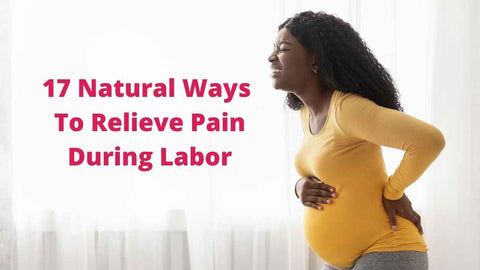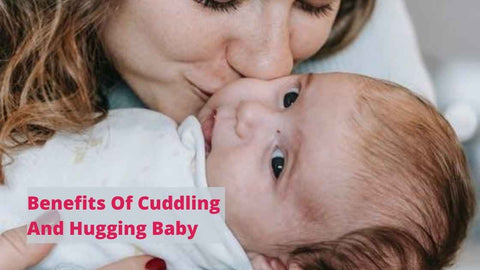Best Pregnancy Support Belts
Hey mom. How are you doing? As your pregnancy progresses you’re beginning to see some of the physical changes in your body. You’re most likely in your second trimester, and your growing belly is now visible, as your baby grows inside you. However, with your growing belly comes some additional challenges for which you may need some support. But before we get into that, let’s discuss what’s happening with your body.
Second Trimester Body Changes
The bigger your baby bump gets, the more uncomfortable you begin to feel. This discomfort is due to the loosening of the ligaments in your body leading to changes to your posture and for many, pain in different parts of your body. A type of pain that you may experience as a result of the increased body weight are called Round Ligament Pains.
Round ligament pain during Pregnancy
Round Ligament Pains are the sharpshooting sensations that usually take place after 14 weeks of pregnancy. They are often felt in the lower belly or groin area on one or both sides of your belly. Many women experience it during the second and third trimesters. And this is very common and normal.
These pains happen when the uterus expands to make more room for our growing baby and to prepare our body for labor. As the uterus grows, the ligaments around the abdomen get stretched and can result in back pain.

Pregnancy support belts are very helpful to overcome ligament pain and back pain. These belts add support to the belly so you can easily continue your daily activities with little to no discomfort or pain.
What are pregnancy support belts?
If you are experiencing round ligament pain, pregnancy support belts and bands can be very helpful. These belts and bands wrap around your lower back and abdomen to support your bump easing the pressure on your lower back and pelvis.
How pregnancy support belts work
Your growing bundle of joy can also be a source of strain and pain during your pregnancy. Pregnancy belly belts wrap around your lower back and abdomen, providing support for their belly and helping to prevent pelvic and hip pain during pregnancy. Many pregnant women have reported that belly belts help ease their pelvic pain.
Types of Pregnancy Support Belts
Ok, before we start, there is one important thing you should know: pregnancy support belts and pregnancy bands are different from each other. Pregnancy bands are designed in a way to help you wear your regular jeans and trousers for a much longer time. While the belts provide more support for your belly to help with the weight and discomfort of your growing baby.
Belly Bands
Belly bands are flexible and stretchable. These bands are made of soft garments shaped like a tube. They come in a variety of sizes, colors, designs, and shapes. When your tummy gets bigger most of your regular clothes won’t fit anymore. You can use belly bands to hide those unbuttoned or unzipped pants. These bands also help you to cover the skin of your belly that gets exposed as the belly expands.
Some belly bands provide very mild compression on the belly and can also support your lower back and hips. They are mainly used as a fashion accessory.
Belly Belts
Belly belts are used as maternity supportive wear. These are more rigid belts that wrap around your belly in a way that covers most of it to add support to the lower back, hips, pelvis, and abdomen during pregnancy.
Some belly belts are narrower and strap-like and you can wear them to help extend the life of your regular clothes during pregnancy. But it is usually sitting on top of clothes like a camisole or vest.
Some other benefits of belly bands and belly belts
Belly belts and bands also have many other positive effects. Some of these are:
- Improved posture
- Prevent leg swelling
- Lower the risk to falling down
- Belly belts reduce the aches and pains in back
- It reduces bladder pressure
- Support wear helps prevent preterm contractions
- Support wear mades exercise easier
If you wear a pregnancy belt or band in the third trimester, it helps improve mobility, so walking and running may be easier and more comfortable. Moreover, these belts will help reduce the chances of any injury while you are exercising.
Best Pregnancy Support Belts
In our review of pregnancy support belts, we looked at the features of the belt, the price range as well as the review rating in making our choice. That being said, here are our top picks for pregnancy support belts that you can use during pregnancy:
The 3-in-1 Maternity Belt
Back Support Maternity Belt
Maternity Belly Band
Considerations before wearing a pregnancy belt or band
Being pregnant doesn’t mean that you have to be uncomfortable all nine months. Pregnancy support belts can be a relief for you to avoid any discomfort while working. But we recommend that you should ask your health care provider before using them. During pregnancy, your practitioner should know everything you do.
Also, remember that pregnancy supportive wear should only be used in moderation. Use them only when you are feeling very uncomfortable. Wearing these belts and bands all the time can slow down the blood flow.
If you are wearing a pregnancy belt or pregnancy band, also remember to:
- Talk to your doctor and ask him or her if you can wear a pregnancy belt or band.
- Check your insurance coverage, you can ask your doctor for a belt if your insurance includes a baby belt.
- Don’t overuse it. Wearing belt too much can reduce airflow to your skin and blood flow to the organs.
- Talk to your doctor about how often you can wear the belt. Most doctors recommend wearing it for only four to five hours a day.
- Tight bands and belts can cause discomfort so use snugly support garments.
Final Thoughts
You can customize pregnancy belts and bands so they can fit you better. During pregnancy, your center of gravity changes, and these belts provide extra firm support. They also help to balance a good posture.






